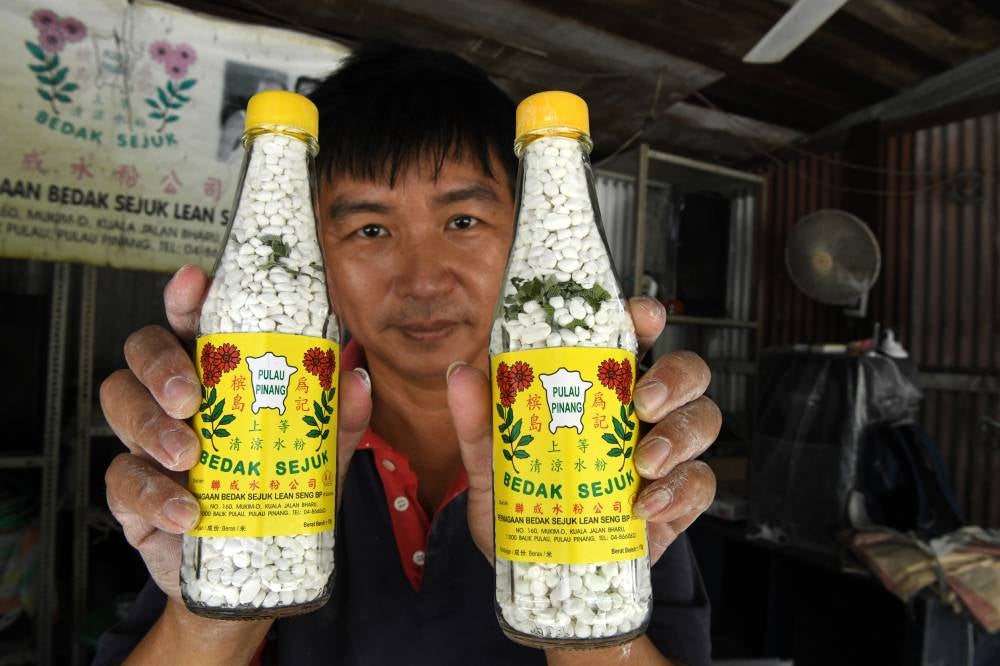Bedak sejuk maker continues legacy of hand-making traditional beauty product
Man continues father's traditional bedak sejuk business

BALIK PULAU - Once upon a time, bedak sejuk (fermented rice-based cooling powder) stood as a traditional skincare staple highly favoured among Asian women, revered for its ability to deliver smooth, flawless, and acne-free skin.
Made from a single fundamental ingredient-rice soaked over an extended period-bedak sejuk offers a plethora of benefits while remaining free from chemicals, thus ensuring its continued relevance in contemporary skincare.
Despite facing competition from the abundance of modern beauty products in the market, Yeoh Seong Huat, 47, is determined to continue the legacy of 'Bedak Sejuk Lean Seng’ founded in 1975 by his late father, Yeoh Keng Beng.
Continuing the tradition of handmade production, Yeoh, a resident of Kampung Jalan Baru, personally crafts the bedak sejuk at home, with occasional assistance from his siblings when they have the time.
"Nowadays, there are many bedak sejuk traders in the market, but most of them have switched to machines because it's faster and saves time. I may be the only one still diligently hand-making it."
"I don't want to change my father’s legacy. I want to preserve it because it's satisfying when we can provide the best to our customers, even though the process is complex and demanding," he told Bernama.
Explaining the process of making bedak sejuk, Yeoh elaborated that the rice needs to be rinsed five to six times before being placed in a covered container and soaked in water for about a month.
He emphasised that a lengthy period is necessary for proper fermentation to ensure the quality of the product.
After the month is up, he said the rice needs to be rinsed several times again to eliminate the sulfur smell from the fermentation process before being ground into a thick paste, filtered, and sun-dried.
It is then mixed with water again, poured into molds, and pressed by hand into small water droplet-shaped bedak sejuk.
"This is then dried for two to three hours and stored overnight. After that, the bedak sejuk is dried under the scorching sun for four to five hours for three days in a row to ensure it is completely dry.
"Then it is sifted to remove dust before being packed into bottles and distributed to the market," he said, adding that he also sells the product online.
The second of three siblings, Seong Huat produces between 10 to 20 kgs of bedak sejuk per day, depending on weather conditions, and sells it at RM7 per bottle.
Locally produced bedak sejuk now faces competition from imported varieties from neighbouring countries, but he is confident that his homemade product maintains strong demand, particularly among loyal customers.
He also hopes for good health to continue the legacy, fearing that future generations might lose touch with this heritage.
"In the past, many elderly people in the village used to make it themselves. But they have all passed away, and the children don't want to continue it because it's laborious and the fermented rice has an unpleasant smell," he said. - BERNAMA














